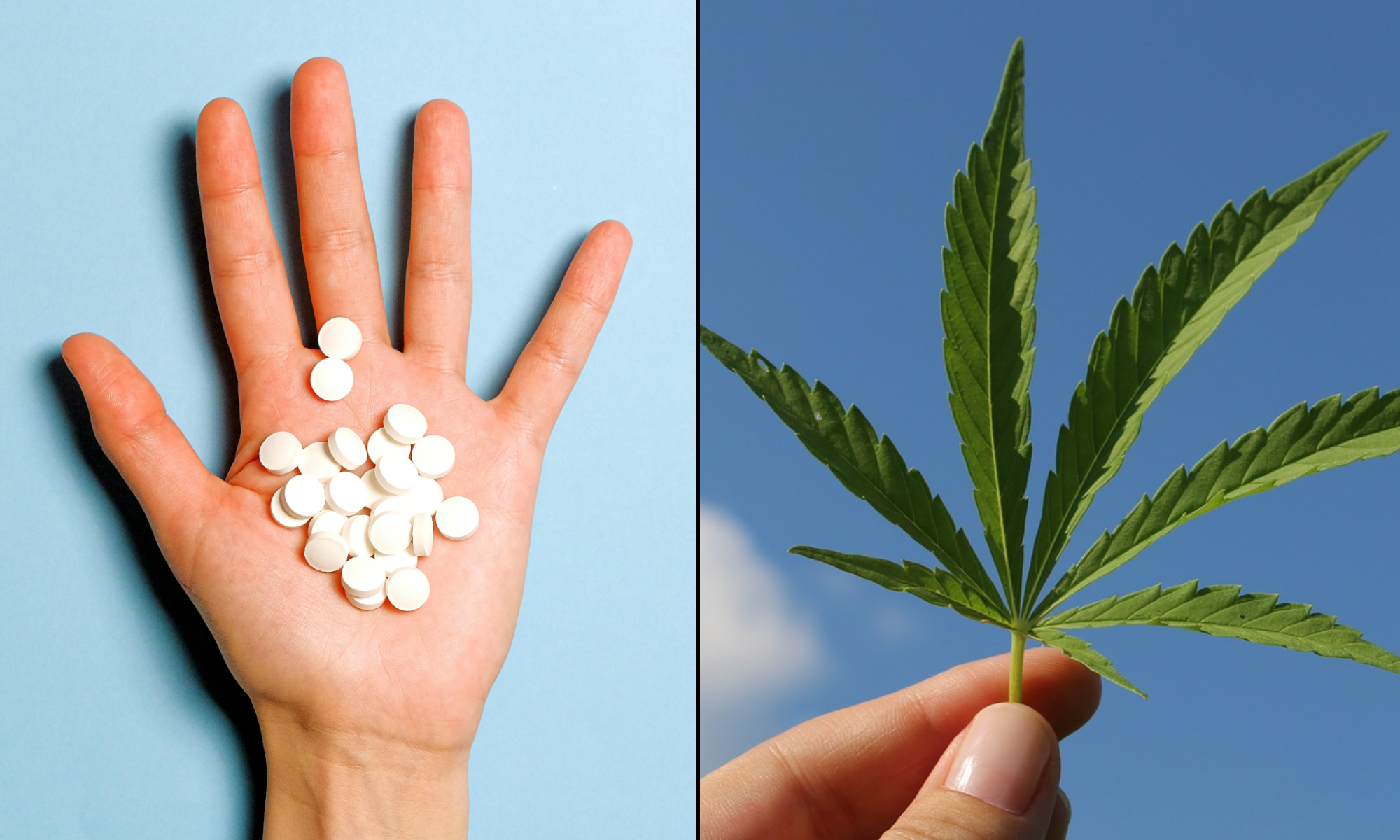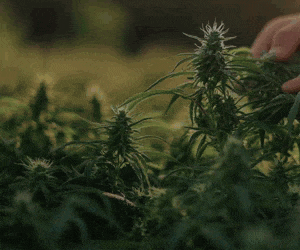Science & Health
Legalizing Medical Marijuana Leads To ‘Significant Reductions’ In Opioid Prescriptions, Another Study Shows

Medical marijuana legalization is “associated with significant reductions in opioid prescribing,” yet another new study has found.
Researchers at the University of Georgia and University of Colorado analyzed prescription claims for 15 to 20 million insured Americans annually from 2007-2020, comparing the prevalence of opioid prescriptions in states with and without medical cannabis programs in place.
“We find that [medical cannabis laws, or MCLs] are associated with significant reductions in opioid prescribing,” the study, published in the American Journal of Health Economics, found. “Among treated states, the rate of patients receiving opioid prescriptions fell by 16% on average, masking substantial heterogeneity across states, with individual state declines reaching 22%.”
“We also find significant decreases in the intensive margin, both in the daily supply and prescriptions per patient,” the researchers said. “Among subpopulations, decreases were relatively uniform across sex, age, and race/ethnicity, though cancer patients, and non-cancer Black patients experienced a larger reduction (over 20%).”
The study also identified increases in the frequency of use of NSAID pain medications, “suggesting that MCLs are associated with substitution away from opioids toward safer alternatives.”
“These findings support the potential of MCLs as a policy tool for reducing opioid use and promoting safer pain management,” the study authors said.
“Specifically, we find a 15.8% average decrease in the rate of patients with opioid prescriptions, relative to the baseline prior to legalizing cannabis, or 107.1 fewer patients each quarter with opioids prescriptions filled per each 10,000 non-cancer enrolled patients. While all twelve MCL adopting states of our timeframe experience decreases, average results mask substantial heterogeneity across implementing states, as some state exhibit negligible decreases (e.g. Illinois), and other states show drops of over 20% in opioid prescription rates (e.g. Minnesota, New York).”
The study provides one of the first estimates on the impact of medical marijuana legalization laws being adopted based on “patient level characteristics,” the researchers wrote.
“We document that the decrease in opioid utilization affected most subpopulations relatively evenly, across sex, age and race/ethnicity,” the paper says. “We also document that the relative decrease among cancer patients and non-cancer black patients is larger, with drops of more than 20% on patients receiving opioid prescriptions following MCL adoption.”
The researchers said their results expand on prior studies “in several important ways.”
“First, our approximation allows for a greater level of heterogeneity as we document variation across states. Furthermore, we are the first study to document variation across patient characteristics as noted above. In comparison to prior estimates, our results are in line albeit slightly larger, with decreases in the rate of patients with opioid prescriptions of 15.8% following MCL adoption. Prior studies have not leverage patient-level data and are thus unable to examine changes in prescribing on the intensive and extensive margins, or examine how the availability of medical cannabis affects different patients in heterogeneous ways.”
While there are certain limitations to the study, the authors said that medical marijuana legalization presents as a “valuable tool that can be used by policymakers to allow patients and physicians to reduce the prescribing of opioid analgesics.”
“In addition, our results contribute to the larger discussion about the role of MCLs in pain management and how medical cannabis may be a viable alternative to riskier or more dangerous medications such as prescription opioid analgesics,” the study says. “Our findings suggest that NSAID use increased after MCL adoption, consistent with complementary use alongside medical cannabis.”
“This study provides robust evidence that the adoption of MCLs is associated with significant reductions in opioid prescribing among commercially insured populations. Using a rich dataset of 15 to 20 million commercially insured individuals per year from 2007 to 2020 and a state-specific synthetic control design, we find that MCLs reduce the rate of patients receiving opioid prescriptions by approximately 16% (p= 0.0000) on average across treated states. Reductions are also evident at the intensive margin: patients receive fewer prescriptions and shorter opioid supplies per prescription.”
“Importantly, these effects are present in nearly all states, they are statistically significant in many states, and they are robust to a variety of sensitivity checks, including different inference strategies (placebo or cross-validation) or alternative policy timing definitions,” it continues.
“Opioid reductions were widespread across demographic subgroups but especially pronounced among cancer patients and non-cancer Black patients, where reductions in the opioid prescription rate were larger than 20%. We also find suggestive evidence of substitution toward non-opioid alternatives: NSAID prescriptions per patient rose modestly, particularly among racial/ethnic minorities. These results underscore that MCLs may support safer pain management strategies and that their effects differ by implementing state, and to a lesser extent across patient characteristics.”
In August, meanwhile, Australian researchers published a separate study similarly showing that marijuana can serve as an effective substitute for opioids in pain management treatment.
Another study published earlier this year in the journal Drug and Alcohol Review found that, among drug users who experience chronic pain, daily cannabis use was linked to a higher likelihood of quitting the use of opioids—especially among men.
Research published late last year also found that legalizing medical cannabis appeared to significantly reduce monetary payments from opioid manufacturers to doctors who specialize in pain, with authors finding “evidence that this decrease is due to medical marijuana becoming available as a substitute” for prescription painkillers.
Other recent research also showed a decline in fatal opioid overdoses in jurisdictions where marijuana was legalized for adults. That study found a “consistent negative relationship” between legalization and fatal overdoses, with more significant effects in states that legalized cannabis earlier in the opioid crisis. Authors estimated that recreational marijuana legalization “is associated with a decrease of approximately 3.5 deaths per 100,000 individuals.”
“Our findings suggest that broadening recreational marijuana access could help address the opioid epidemic,” that report said. “Previous research largely indicates that marijuana (primarily for medical use) can reduce opioid prescriptions, and we find it may also successfully reduce overdose deaths.”
Another recently published report into prescription opioid use in Utah following the state’s legalization of medical marijuana found that the availability of legal cannabis both reduced opioid use by patients with chronic pain and helped drive down prescription overdose deaths statewide. Overall, results of the study indicated that “cannabis has a substantial role to play in pain management and the reduction of opioid use,” it said.
Yet another study, published in 2023, linked medical marijuana use to lower pain levels and reduced dependence on opioids and other prescription medications. And another, published by the American Medical Association (AMA) last February, found that chronic pain patients who received medical marijuana for longer than a month saw significant reductions in prescribed opioids.
About one in three chronic pain patients reported using cannabis as a treatment option, according to a 2023 AMA-published report. Most of that group said they used cannabis as a substitute for other pain medications, including opioids.
Other research published that year found that letting people buy CBD legally significantly reduced opioid prescription rates, leading to 6.6 percent to 8.1 percent fewer opioid prescriptions.
A 2022 research paper that analyzed Medicaid data on prescription drugs, meanwhile, found that legalizing marijuana for adult use was associated with “significant reductions” in the use of prescription drugs for the treatment of multiple conditions.
A 2023 report linked state-level medical marijuana legalization to reduced opioid payouts to doctors—another datapoint suggesting that patients use cannabis as an alternative to prescription drugs when given legal access.
Researchers in another study, published last year, looked at opioid prescription and mortality rates in Oregon, finding that nearby access to retail marijuana moderately reduced opioid prescriptions, though they observed no corresponding drop in opioid-related deaths.
Other recent research also indicates that cannabis may be an effective substitute for opioids in terms of pain management.
A report published recently in the journal BMJ Open, for instance, compared medical marijuana and opioids for chronic non-cancer pain and found that cannabis “may be similarly effective and result in fewer discontinuations than opioids,” potentially offering comparable relief with a lower likelihood of adverse effects.
Separate research published found that more than half (57 percent) of patients with chronic musculoskeletal pain said cannabis was more effective than other analgesic medications, while 40 percent reported reducing their use of other painkillers since they began using marijuana.



